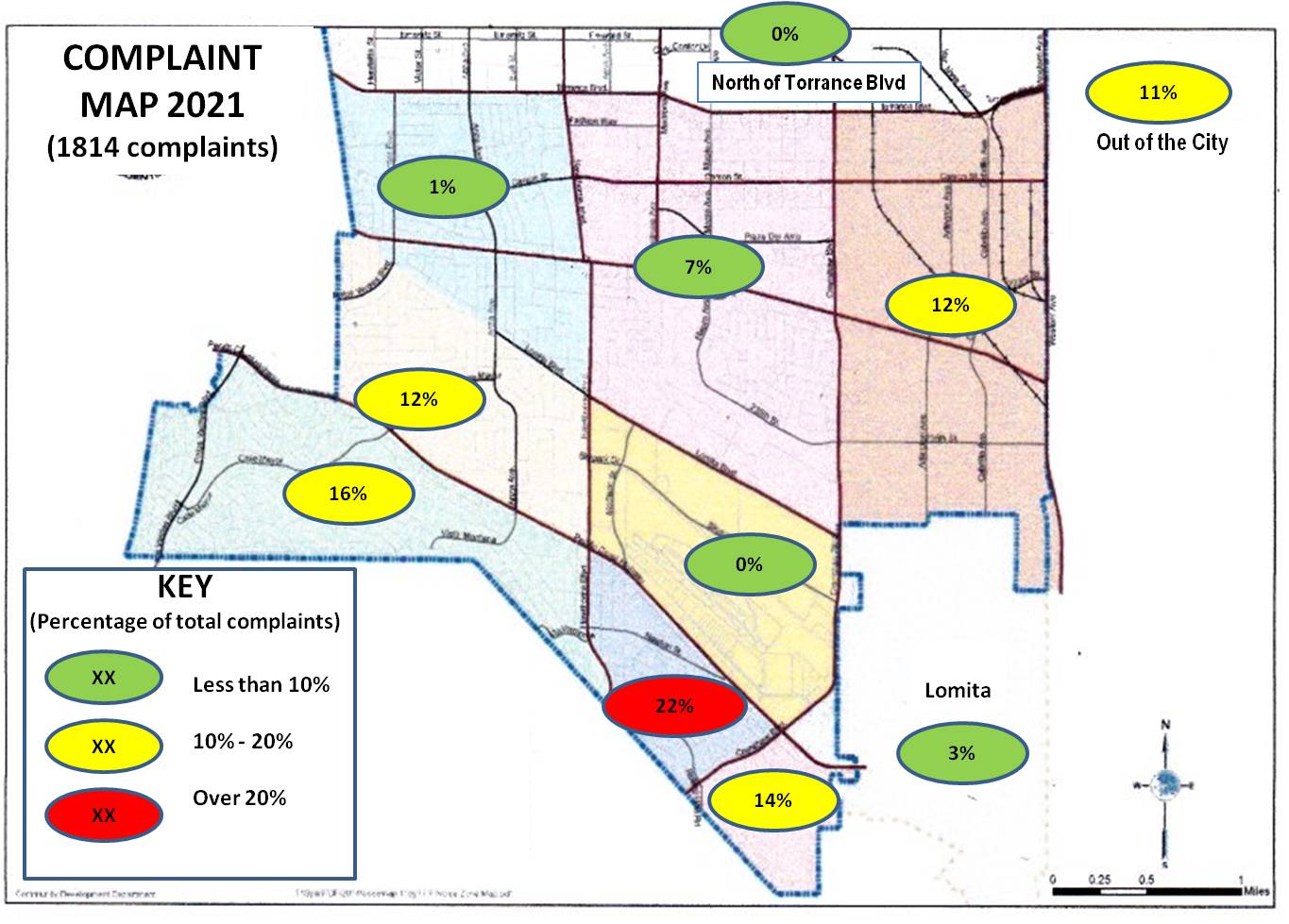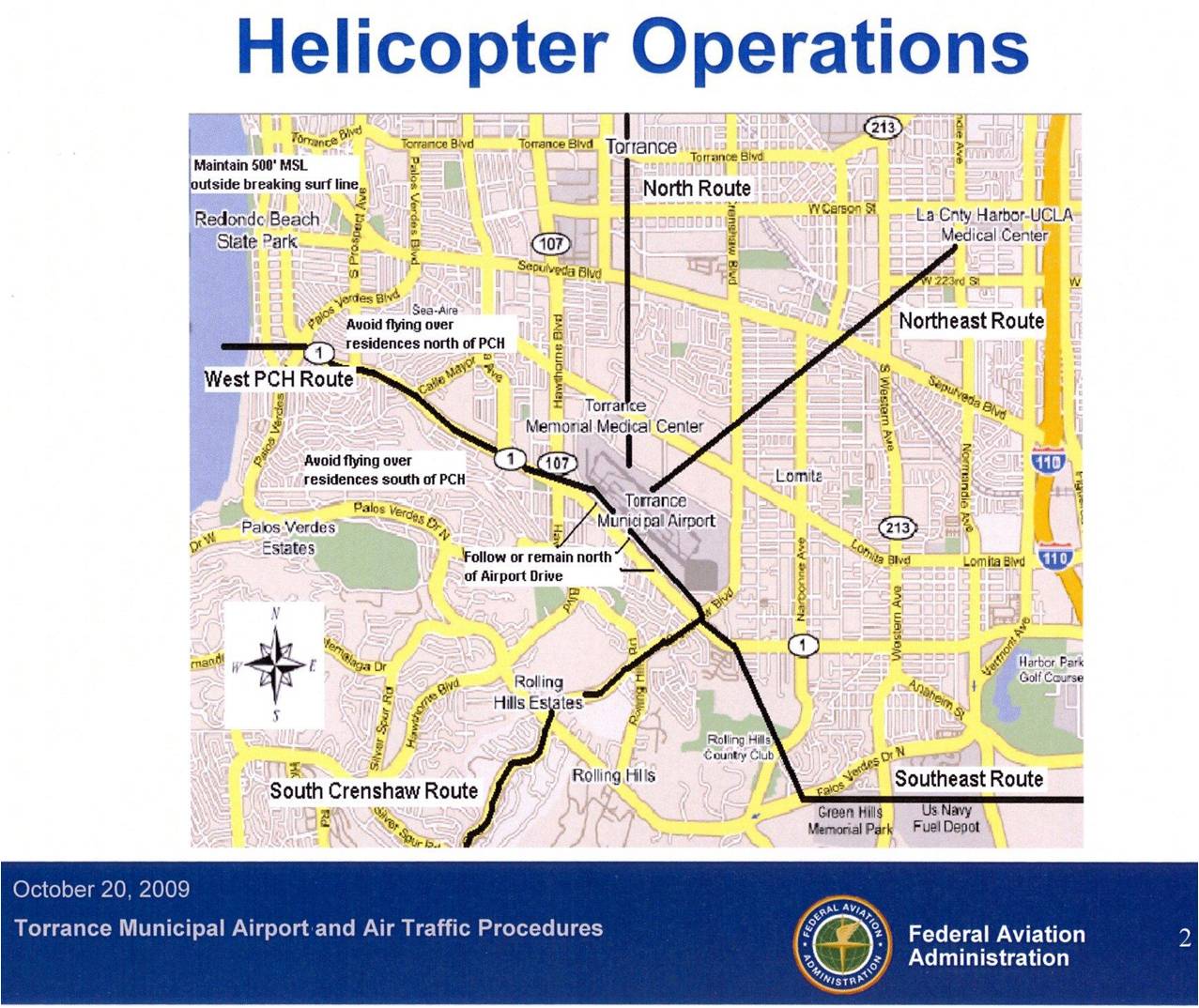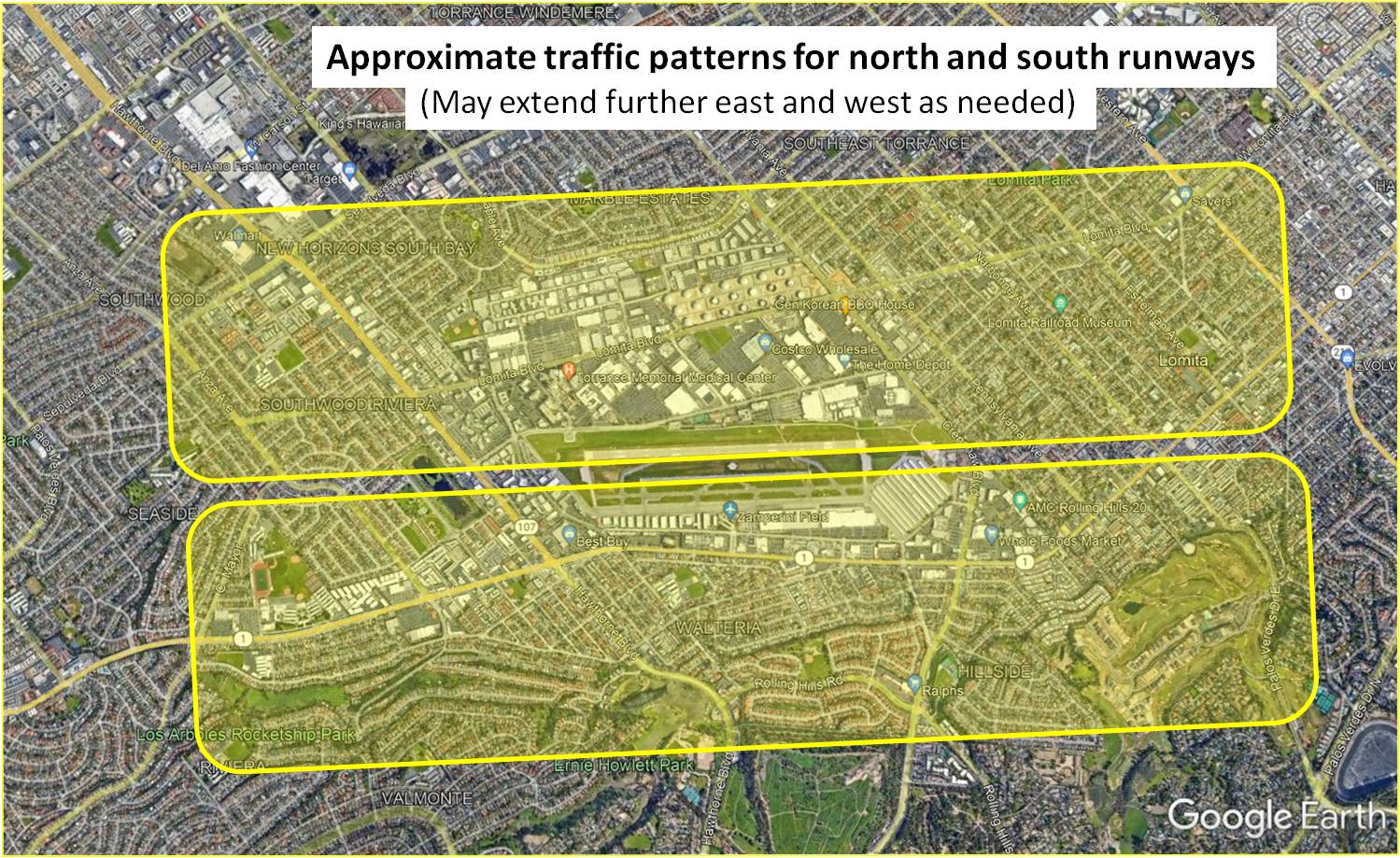BUYING A HOME NEAR THE AIRPORT
 POTENTIAL HOME BUYERS SHOULD NOT RELY ON THE RESIDENTIAL DISCLOSURE REPORT to determine whether or not the property is
affected by airport traffic -- especially if it is located three miles or less from the airport. Instead, they should
contact the Torrance Airport
and ask about helicopter routes, traffic patterns, departure routes, and arrival routes. Ask if noise complaints have been
made by the current property owner or the neighbors. Ask the homeowners association if airport noise has been identified to
them as a problem.
POTENTIAL HOME BUYERS SHOULD NOT RELY ON THE RESIDENTIAL DISCLOSURE REPORT to determine whether or not the property is
affected by airport traffic -- especially if it is located three miles or less from the airport. Instead, they should
contact the Torrance Airport
and ask about helicopter routes, traffic patterns, departure routes, and arrival routes. Ask if noise complaints have been
made by the current property owner or the neighbors. Ask the homeowners association if airport noise has been identified to
them as a problem.
Potential buyers or renters of residential property should keep in mind that Torrance Airport is a key regional transportation asset.
As such, the number of flights, traffic mix and types of aircraft using the airport will change with time as transportation needs change.
CONDITIONS IN THE FUTURE WILL NOT BE THE SAME AS THEY ARE TODAY OR HAVE BEEN IN THE PAST.

 AIRCRAFT MAY LEGALLY FLY ANYWHERE OVER THE SOUTH BAY, these maps depicts the FAA-approved helicopter routes and the typical airport
traffic patterns around the airport. Helicopters fly at 500 feet above ground level (AGL) on the routes and in the traffic pattern
so as not to conflict with fixed-wing traffic pattern at 1000 feet AGL.
AIRCRAFT MAY LEGALLY FLY ANYWHERE OVER THE SOUTH BAY, these maps depicts the FAA-approved helicopter routes and the typical airport
traffic patterns around the airport. Helicopters fly at 500 feet above ground level (AGL) on the routes and in the traffic pattern
so as not to conflict with fixed-wing traffic pattern at 1000 feet AGL.
Fixed-wing aircraft arriving or departing the airport may be below 1000 feet AGL. The Torrance Air Traffic Control
Tower controls all flights below 2600 feet above sea level and within 5 miles of the airport and directs aircraft in the traffic patterns.
Low coastal clouds or other airport traffic may require the pilot to make early turns north or south of these paths to maintain
the FAA-required clearance from clouds (2000 feet horizontally, 1000 feet above, and 500 feet below).
Section 1102 of the California Civil Code requires the seller (in the California
Residential Disclosure Report, Paragraph C, item 11) to identify neighborhood
noise problems or other nuisances. Ask the seller or the seller’s agent if there are such issues with the property or if
the seller has made airport noise complaints.
The following is a partial listing of California real estate fraud statutes. These statutes are very liberally construed to
facilitate the public interest in preventing fraud in real estate transactions.
- "Where the seller knows of facts materially affecting the value or desirability of the property, …
the seller is under a duty to disclose them to the buyer." Lynch v Savage, 213 Cal. 2nd 729
- "A seller may have an affirmative duty to disclose certain significant facts regarding the condition of his property.
It is not enough to say nothing because he is not asked." California Real Estate Transactions, 12.2 Page 463 (Cal CEB 1967)
- "It is better for the seller to disclose specific conditions than to attempt to exculpate himself against its
nondisclosure. In general, the exculpatory (e.g. "As is.") clause provides little if any protection." California Real Estate
Sales Transaction p. 483 (Cal CEB 1967)
Section 1103.4
of the California Civil Code requires notice to the buyer (in the California
Residential Disclosure Report) if a property is encompassed within an airport influence area.
Section 11010 of the Business and Professions Code defines an airport influence area
as "an area in which current or future airport NOISE, OVERFLIGHT, safety
or airspace protection factors may significantly affect land uses. . ." [emphasis added].
A number of companies prepare these reports and some rely only on maps prepared by the county Airport Land Use Commissions
(ALUC) to make this determination. The current
Torrance Airport Influence Area map
was prepared in 1991. With a few minor exceptions, it shows the airport influence
area as completely contained on airport property. It does NOT include the helicopter routes or the aircraft
arrival and departure routes. This map does NOT meet the requirements of the law.
The Los Angeles County ALUC
has plans to update the influence area maps for their airports, but the state
has provided NO FUNDING to date. The update process will include the helicopter routes
and other areas in which overflight complaints have been made.
Some local companies do, however, factor in the airport’s traffic in their Disclosure Reports and are complying with the
intent of the laws. GeoAssurance, Inc. of Long Beach,
for example, properly identifies all property within 2 miles of the airport as being within the Airport Influence Area.
Another source of information is the Torrance Community Development Department, which keeps track of airport complaints from the
specific "Complaint Zones" throughout the City of Torrance and Lomita. The figure shown here lists the number of complaints
from each zone--in this case, for the 3rd quarter of 2020.
It is best to do your own research
to find out the details of airport traffic flow over the property.
 POTENTIAL HOME BUYERS SHOULD NOT RELY ON THE RESIDENTIAL DISCLOSURE REPORT to determine whether or not the property is
affected by airport traffic -- especially if it is located three miles or less from the airport. Instead, they should
contact the Torrance Airport
and ask about helicopter routes, traffic patterns, departure routes, and arrival routes. Ask if noise complaints have been
made by the current property owner or the neighbors. Ask the homeowners association if airport noise has been identified to
them as a problem.
POTENTIAL HOME BUYERS SHOULD NOT RELY ON THE RESIDENTIAL DISCLOSURE REPORT to determine whether or not the property is
affected by airport traffic -- especially if it is located three miles or less from the airport. Instead, they should
contact the Torrance Airport
and ask about helicopter routes, traffic patterns, departure routes, and arrival routes. Ask if noise complaints have been
made by the current property owner or the neighbors. Ask the homeowners association if airport noise has been identified to
them as a problem.

 AIRCRAFT MAY LEGALLY FLY ANYWHERE OVER THE SOUTH BAY, these maps depicts the FAA-approved helicopter routes and the typical airport
traffic patterns around the airport. Helicopters fly at 500 feet above ground level (AGL) on the routes and in the traffic pattern
so as not to conflict with fixed-wing traffic pattern at 1000 feet AGL.
AIRCRAFT MAY LEGALLY FLY ANYWHERE OVER THE SOUTH BAY, these maps depicts the FAA-approved helicopter routes and the typical airport
traffic patterns around the airport. Helicopters fly at 500 feet above ground level (AGL) on the routes and in the traffic pattern
so as not to conflict with fixed-wing traffic pattern at 1000 feet AGL.